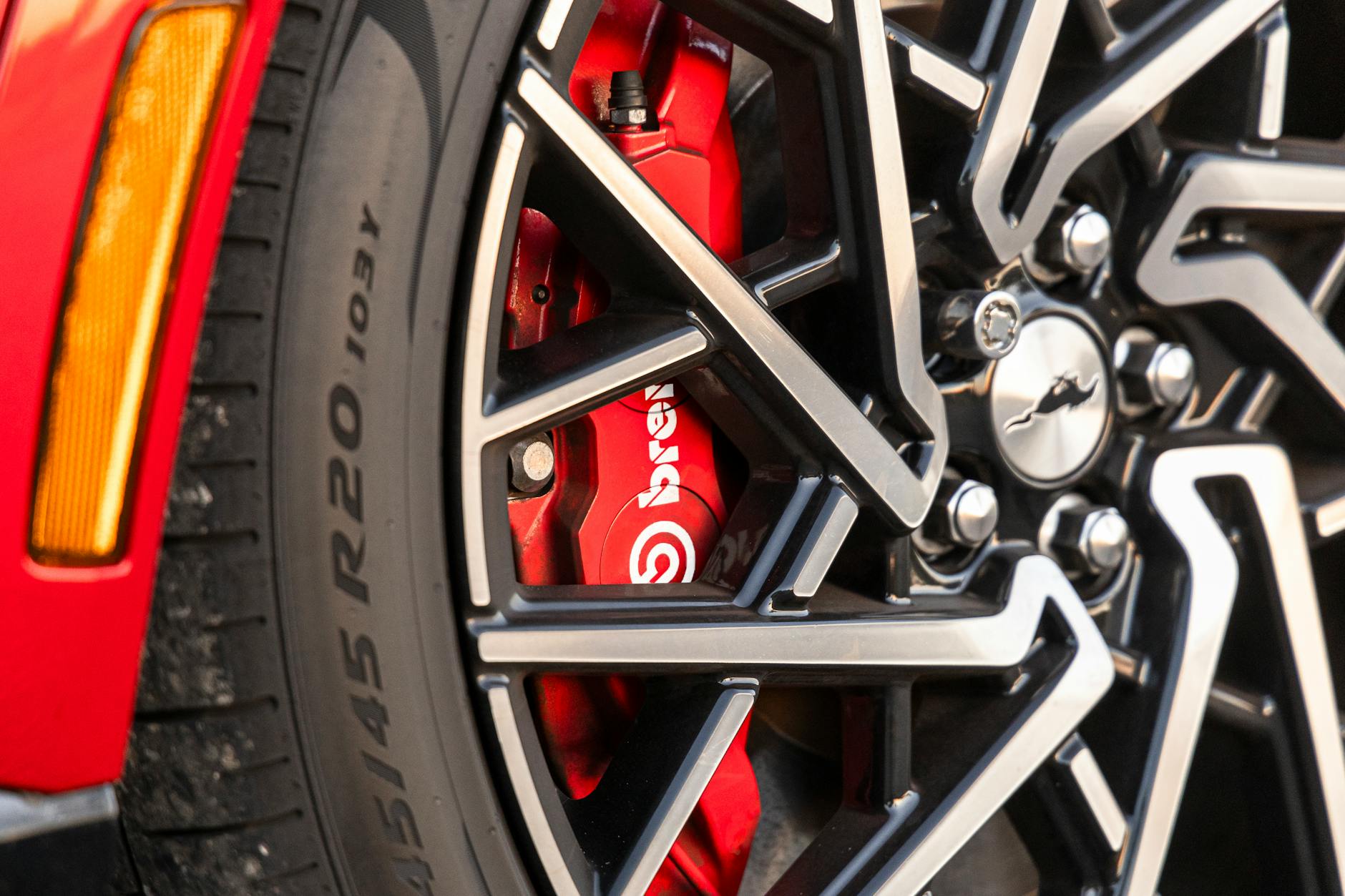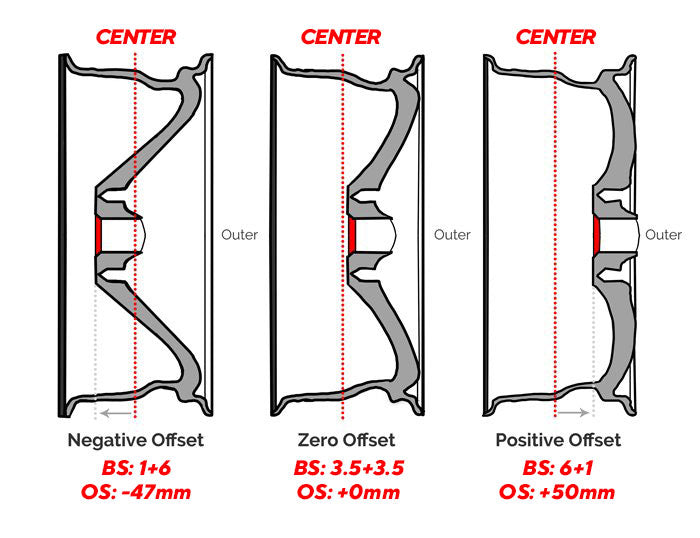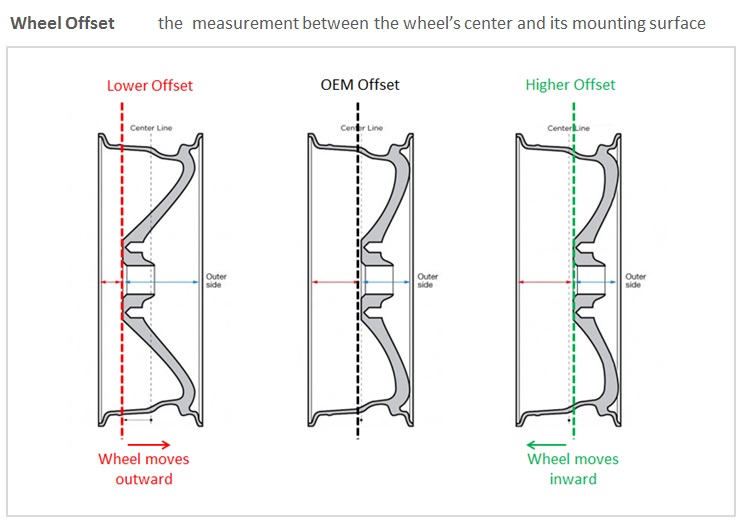Confused about wheel measurements? Learn about Offset vs Backspacing in our ultimate guide for choosing the right wheels for you.
 Image courtesy of Jordan Rushton via Pexels
Image courtesy of Jordan Rushton via Pexels
Table of Contents
- Introduction: Understanding Wheels
- What is Wheel Offset?
- What is Wheel Backspacing?
- Offset vs Backspacing: The Comparison
- How to Measure Wheel Offset
- The Wheel Offset Chart Explained
- Measuring Wheel Backspacing
- How Offset and Backspacing Affect Your Car
- Choosing the Right Offset and Backspacing
- Troubleshooting Common Issues
- Quiz Time: Do You Know Your Wheels?
- Conclusion: Mastering Wheel Knowledge
Introduction: Understanding Wheels
Hey there, young car enthusiasts! Have you ever looked at a car and wondered how its wheels make it move or why they look a certain way? Well, understanding the different parts of a car, like wheels, is crucial to knowing how they work and why they’re designed the way they are. Today, we’re going to dive into the fascinating world of wheels and explore concepts like offset and backspacing that play a big role in how cars look and perform.
Imagine wheels as the feet of a car. They don’t just help it move; they also determine how smoothly it glides on the road and how cool it looks doing so. This is where offset and backspacing come into play—like secret ingredients that affect the way a car handles and its overall appearance.
What is Wheel Offset?
When we talk about cars and wheels, one important concept to understand is wheel offset. But what exactly does wheel offset mean? Well, let’s break it down in a simple and easy way.
Defining Wheel Offset
Wheel offset refers to the distance between the center of the wheel and the mounting surface where the wheel attaches to the hub of the car. This measurement plays a big role in how your car looks and how it handles on the road.
The Significance of Wheel Offset
Why does wheel offset matter? Imagine positive, negative, and zero offset as three friends with different personalities. Positive offset means the mounting surface is towards the front of the wheel, while negative offset places it towards the back. Zero offset is right in the middle.
This offset affects how your car sits on the road, how much space the wheel takes up in the wheel well, and even how well your car handles corners. It’s like finding the perfect spot for a puzzle piece to fit just right.
What is Wheel Backspacing?
When it comes to car wheels, there’s another important factor to consider besides offset, and that’s wheel backspacing. So, what exactly is wheel backspacing and why does it matter?

Image courtesy of ok4wd.com
Wheel backspacing refers to the distance between the mounting surface of the wheel and the inner edge of the wheel. In simpler terms, it’s the measurement from the back of the wheel to the mounting surface where it attaches to the hub of the car. This measurement plays a crucial role in determining how the wheel sits in relation to the car’s body and suspension.
Imagine if the wheel had too much backspacing, it might sit too far inward towards the suspension components, causing potential rubbing issues when turning or hitting bumps. On the other hand, if the backspacing is too little, the wheel could stick out too far from the fender, affecting the overall look of the car.
Offset vs Backspacing: The Comparison
So, now that we understand what wheel offset and wheel backspacing are, let’s take a closer look at how they compare to each other. While they may sound similar, they actually serve different purposes when it comes to your car’s wheels.
Offset versus Backspacing
Imagine that offset and backspacing are like two sides of the same coin. While wheel offset focuses on how your wheel is positioned in relation to the hub and fender, wheel backspacing deals with how far the wheel extends inwards towards the car’s suspension components.
Picture this: offset determines how much your wheel sticks out or tucks in from your car’s body, affecting its appearance and handling. On the other hand, backspacing plays a role in ensuring your tires don’t rub against the suspension parts while driving, which is crucial for a smooth and safe ride.
So, in a nutshell, offset is more about the look and handling of your car, while backspacing is primarily concerned with the mechanical aspects and clearance requirements.
How to Measure Wheel Offset
Measuring wheel offset may sound like a tricky task, but with the right steps, you can easily understand and calculate it. Here’s a simple guide to help you measure wheel offset like a pro!
 Image courtesy of blog.tdotperformance.ca
Image courtesy of blog.tdotperformance.ca
Step 1: Gather Your Tools
Before you begin, make sure you have a few tools handy. You’ll need a measuring tape, a straight edge (like a ruler), and a little bit of patience.
Step 2: Locate the Wheel Hub
Find the center of the wheel hub—the part where the wheel bolts onto your car. This is your starting point for measuring the wheel offset.
Step 3: Measure the Wheel Width
Use your measuring tape to measure the width of the wheel. This is the distance between the two edges of the wheel, including the lip if there is one.
Step 4: Measure the Mounting Pad
Locate the mounting pad—the flat surface where the wheel rests against the brake rotor. Measure from the mounting pad to the back edge of the wheel. This distance is your backspacing.
Step 5: Calculate the Offset
Subtract the backspacing from the wheel’s width. If the result is a positive number, you have a positive offset. If it’s negative, you have a negative offset. And if it’s zero, well, you guessed it—you have a zero offset!
By following these steps, you can easily measure the wheel offset of your car’s wheels. Understanding this measurement can help you choose the right wheels for your vehicle and improve its overall performance and appearance.
The Wheel Offset Chart Explained
So, now that you know what wheel offset is and why it’s essential for your car, let’s dive into the world of wheel offset charts. Don’t worry, it’s not as complicated as it sounds!
Deciphering the Chart
A wheel offset chart is like a map that helps you understand how your wheels will sit on your car. It shows you how far in or out your wheels will be from the center of the car. Think of it as a guide to where your wheels will end up.
Reading the Numbers
When you look at a wheel offset chart, you’ll see numbers like +20 or -10. These numbers tell you how much the wheel’s mounting surface is offset from the centerline of the wheel. A positive number means the wheel sticks out more, while a negative number means it tucks in.
Let’s Break It Down
Imagine you have a wheel with a +15 offset. This means that the mounting surface is 15 millimeters outwards from the centerline. On the other hand, a -10 offset would place the mounting surface 10 millimeters inside the centerline.
So, when you’re looking at a wheel offset chart, remember that a higher positive number means your wheels will stick out more, while a negative number means they will be more tucked in.
Measuring Wheel Backspacing
Now that we’ve covered wheel offset, let’s delve into another important aspect of understanding car wheels: wheel backspacing. Just like offset, backspacing plays a vital role in how your car looks and handles on the road.
 Image courtesy of www.valoroffroad.com
Image courtesy of www.valoroffroad.com
What is Wheel Backspacing?
Wheel backspacing refers to the distance between the mounting surface of the wheel and the inner edge (or the back) of the wheel. It determines how far your wheels will sit inside or outside the wheel well of your car. The backspacing measurement is crucial in ensuring proper wheel fitment and preventing rubbing against the fenders or suspension components.
Think of backspacing as the space available for your wheels to tuck neatly into the wheel well of your car. Too much backspacing might cause your wheels to stick out awkwardly, while too little backspacing could lead to rubbing issues.
Measuring Wheel Backspacing
Measuring wheel backspacing is a simple process that you can do at home with just a few tools. Here’s a fun and easy way to measure your wheel backspacing:
- Start by laying one of your wheels flat with the backside facing up.
- Place a straight edge across the wheel, touching the wheel’s mounting surface.
- Use a tape measure to find the distance from the mounting surface to the back edge of the wheel. This measurement is your wheel backspacing.
Remember to repeat this process for all your wheels, as backspacing may vary between different wheel designs or sizes. Once you have your backspacing measurements, you’ll have a better understanding of how your wheels will fit on your car.
How Offset and Backspacing Affect Your Car
When it comes to the way your car drives and handles, two important factors to consider are offset and backspacing. These may sound like complicated terms, but they actually play a crucial role in the overall performance of your vehicle.
| Offset vs Backspacing: A Guide | ||||||||||||||||||
|---|---|---|---|---|---|---|---|---|---|---|---|---|---|---|---|---|---|---|
|
Impact of Offset
Let’s start by looking at offset. The offset of a wheel determines where the mounting surface is in relation to the centerline of the wheel. A positive offset means the mounting surface is towards the front of the wheel, a negative offset towards the back, and a zero offset right in the middle.
Having the right offset for your car is essential because it affects how the wheels fit within the wheel wells and the suspension components. The wrong offset can lead to rubbing against the wheel well or suspension parts, causing unwanted friction and potential damage.
Understanding Backspacing
Now, let’s talk about backspacing. This refers to the distance between the mounting surface of the wheel and the back edge of the wheel. Backspacing plays a key role in determining how far in or out the wheel sits in relation to the vehicle.
The backspacing of a wheel affects the steering response, stability, and overall look of your car. If the backspacing is incorrect, it can lead to poor handling, uneven tire wear, and even safety issues on the road.
The Combined Effect
While offset and backspacing are different measurements, they are closely related and work together to impact your car’s performance. Getting the right combination of offset and backspacing is crucial for ensuring optimal handling, stability, and overall driving experience.
By understanding how offset and backspacing affect your car, you can make informed decisions when choosing wheels for your vehicle. It’s not just about the aesthetics; it’s about ensuring your car operates smoothly and safely on the road.
Choosing the Right Offset and Backspacing
When it comes to ensuring that your car looks and drives its best, choosing the right offset and backspacing for your wheels is crucial. These two factors play a significant role in how your car performs on the road and how it looks. Let’s dive into how you can select the best offset and backspacing for your vehicle.
 Image courtesy of blog.tdotperformance.ca
Image courtesy of blog.tdotperformance.ca
Consider Your Car Model
First and foremost, you should consider the make and model of your car when choosing the offset and backspacing. Different vehicles have different requirements when it comes to wheel positioning, so it’s essential to consult your car’s manual or a professional to determine the ideal measurements for your specific vehicle.
Factor in Wheel Size
Another important aspect to consider is the size of your wheels. Larger wheels may require different offset and backspacing measurements compared to smaller wheels. Make sure to take into account the diameter and width of your wheels when making your decision.
Desired Performance
Think about how you want your car to perform. If you’re looking for better handling and stability, you may want to choose an offset and backspacing that helps distribute the weight of the car evenly. On the other hand, if you’re going for a more aggressive look, you might opt for a setup that gives your car a wider stance.
By taking these factors into consideration and possibly seeking advice from a professional, you can ensure that you choose the right offset and backspacing for your car. Remember, getting these measurements right can make a significant difference in how your car handles and looks on the road.
Troubleshooting Common Issues
As we’ve learned, getting the right offset and backspacing for your car’s wheels is crucial for both its appearance and performance. However, sometimes issues may arise if these measurements are not well-suited for your vehicle. Let’s take a look at some common problems you might encounter and how you can troubleshoot them.
Identifying Common Issues
One common issue that can occur is rubbing or scraping against the vehicle’s fenders or other components. This might happen if the wheels have too much positive offset, causing them to extend too far into the wheel well. You may notice this when turning sharp corners or going over bumps.
Another issue could be poor handling or steering response. If the offset and backspacing are not optimized for your car, it could affect the way the vehicle handles on the road. You might experience instability, difficulty steering, or uneven tire wear.
Simple Solutions
If you’re facing rubbing or scraping issues, one solution could be to install wheel spacers. These can push the wheels out slightly, providing more clearance in the wheel well. Just make sure to get the right size spacers for your specific wheels and vehicle.
For handling and steering problems, you might need to consider getting wheels with a different offset or backspacing that better suit your car’s requirements. Consulting with a professional or doing some research to find the optimal measurements for your vehicle can help improve performance.
Regularly inspecting your wheels and tires for any signs of rubbing or wear can also help catch issues early before they become more serious. Keeping an eye on your car’s performance and addressing any problems promptly can ensure a smoother and safer driving experience.
Quiz Time: Do You Know Your Wheels?
Alright, young car enthusiasts! Let’s put your newfound knowledge of wheel offset and backspacing to the test with a fun quiz. Get ready to show off what you’ve learned!
 Image courtesy of www.carparts.com
Image courtesy of www.carparts.com
Question 1:
What does wheel offset refer to?
Question 2:
How does positive offset affect the position of the wheel?
Question 3:
Define wheel backspacing and its role in car handling.
Question 4:
Explain the difference between offset and backspacing.
Question 5:
How would you measure wheel offset on a car?
Question 6:
What is a wheel offset chart used for?
Take your time to think about the questions and answer them to see how well you’ve grasped the concepts of wheel offset and backspacing. Good luck!
Conclusion: Mastering Wheel Knowledge
After learning about offset and backspacing, you now have a better understanding of how these two elements play a crucial role in the appearance and performance of a car’s wheels. By mastering wheel knowledge, you can start to appreciate the intricacies of how wheels are designed and positioned on a vehicle.
Remember, the next time you see a car, take a moment to observe its wheels and think about how the offset and backspacing might be influencing its overall look and handling. It’s like unlocking a secret code that helps you appreciate the craftsmanship that goes into designing a vehicle.
So, the next time you’re out and about, keep an eye on the wheels around you and see if you can spot the differences in offset and backspacing. Who knows, you might just become a wheel expert in no time!


